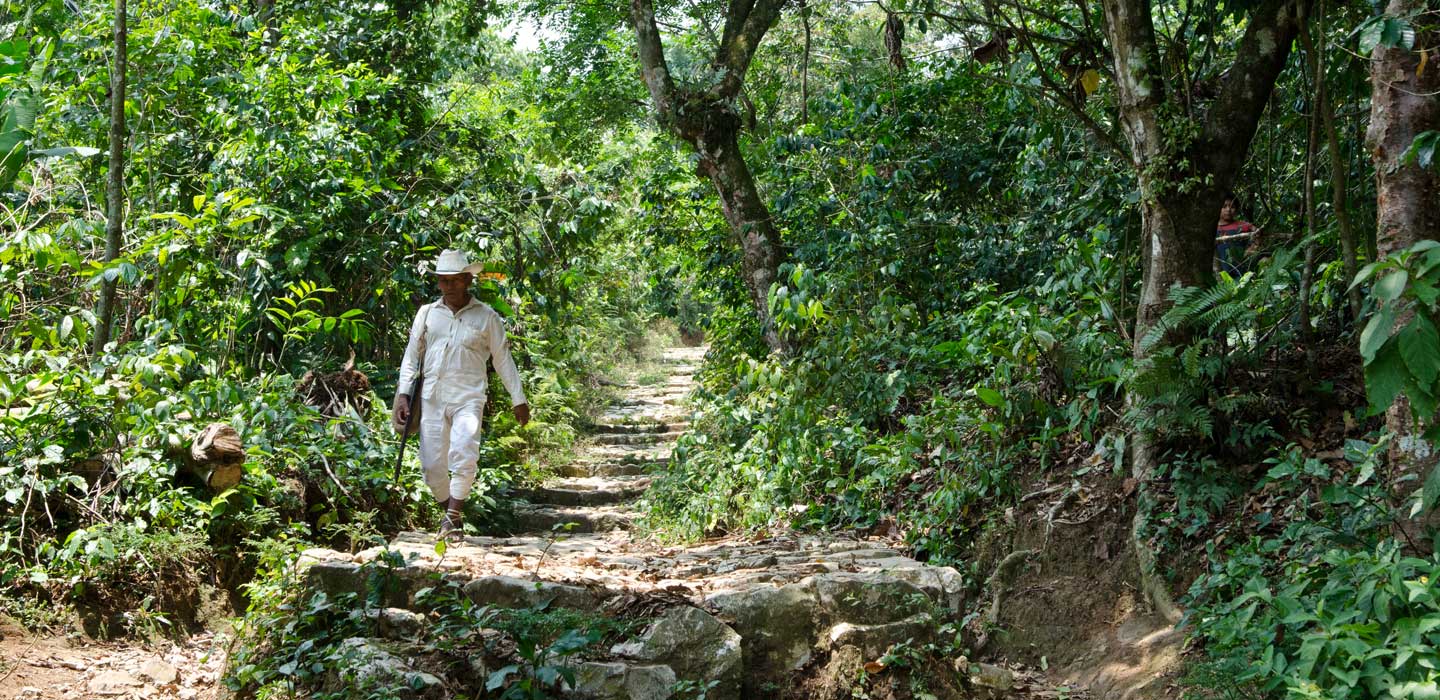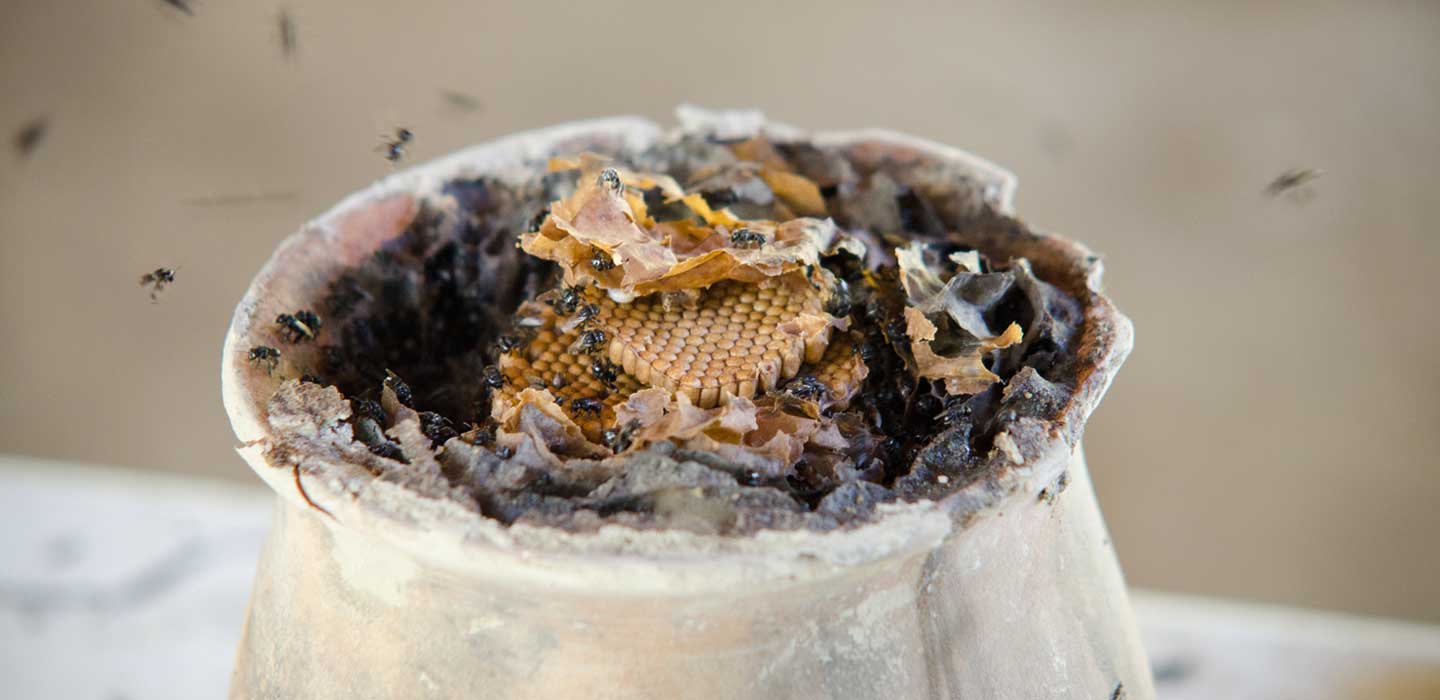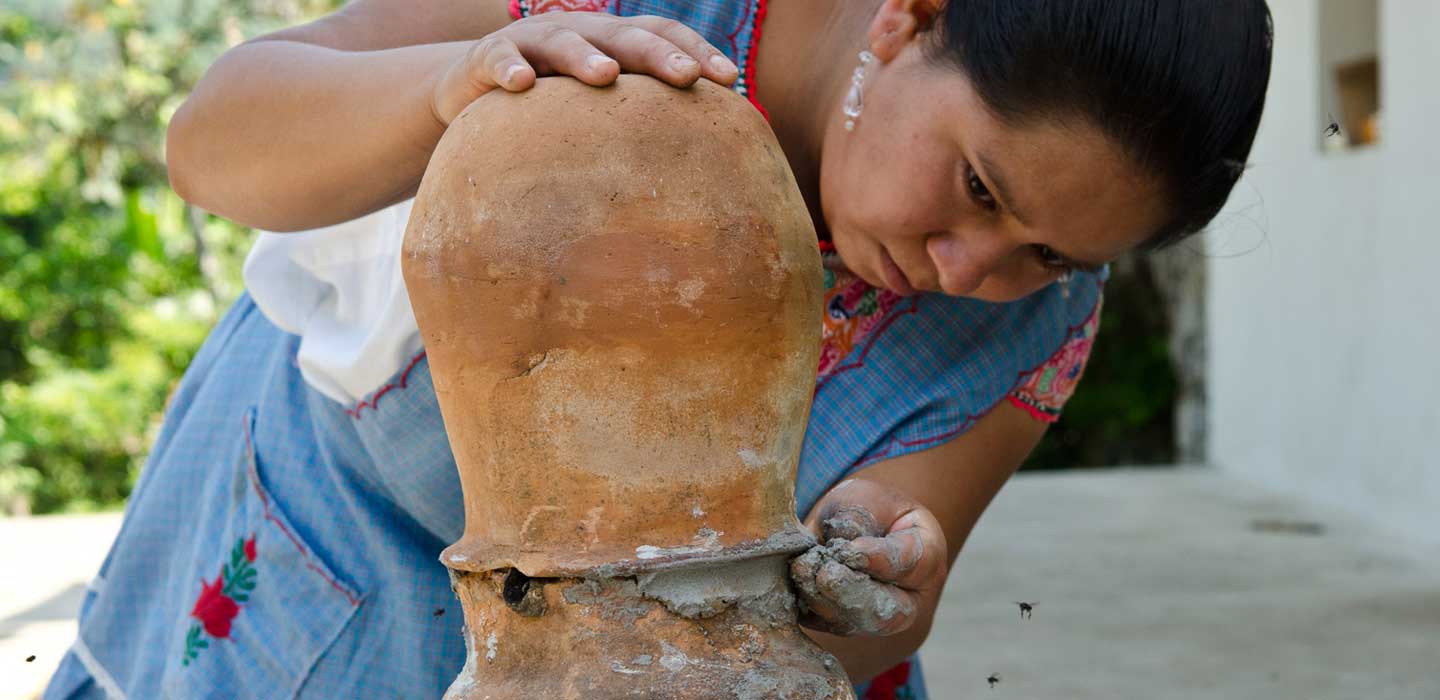High-altitude honey: Puebla Sierra Norte native bee honey
IFAD Asset Request Portlet
Asset Publisher
High-altitude honey: Puebla Sierra Norte native bee honey
Estimated reading time: 4 minutes
In the Sierra Norte mountain range in Mexico lives a special breed of bee. Known locally as pisilnekmej, the Scaptotrigona Mexicana is a member of the family native to the American continent whose distinctive trait is that they have no sting.
Protected by indigenous communities, it is bred in traditional mancuernas, hives consisting of two terracotta pots sealed together with a damp ash paste. The honey produced is used by families for food and medicine. Spicy and piquant on the nose, it is complex and sharp-flavoured with citrusy notes on the palate.
In 2012, a Slow Food Presidium was launched in collaboration with the Tosepan Titataniske cooperative (the name in Náhuatl means “United We’ll Win”). Producers deliver their honey and other mancuerna products to the cooperative for a fair price, then the cooperative markets the honey, pollen or propolis and uses them to produce cosmetics.
Since 2018, the Presidium has taken part in a project entitled Empowering indigenous youth and their communities to defend and promote the agricultural and gastronomic heritage, funded by IFAD. The main aim of the project is to train new young indigenous producers and to use their work as apiculturists to promote this unique honey and its area of production through community tourism channels. Slow Food is also megaphoning the voices of Presidium producers in their battle to protect the local area from land grabbing by mining and energy companies. In recognition of the work carried out by the apiculturists to date, in 2011 Cuetzalan was declared a “Pisilnekmej Native Bee Sanctuary.”
Slow Food interviewed Tania Guadalupe García Guerra, the Presidium coordinator, and Rubén Chico Cruz, a technician and stingless honeybee breeding expert.
Can you tell us what the main changes have been since the Presidium was created in 2012?
The project began in 2006, when we organized Scaptotrigona mexicana bee honey production in collaboration with our partners, who were then selling their honey at 50 pesos per liter. By 2018 the price had increased ninefold to 450 pesos per liter. The Tosepan Cooperative Union, which coordinates the Puebla Sierra Norte Native Bees Honey, is currently the world’s most important stingless bee breeders’ organization. In this sense, the naming of the Presidium gave an extremely important impulse to the valorization of the honey. Previously, in fact, Scaptotrigona mexicana honey had been devalued because, according to the prevailing market perception, its sensory characteristics failed to conform to the standards of Apis mellifera honey. The naming of the Presidium made it possible to recognize and appreciate the honey for its intrinsic characteristics.
What do the bee and honey represent for your indigenous community? Is there a story you can tell us about the product?
The Scaptotrigona mexicana bee, whose Nahuatl name is pitsilnekmej (small bee), has been bred for generations as a backyard activity in the indigenous communities of the Sierra Nororiental de Puebla. Managing the activity consists basically of establishing a site to place the pots containing the honeycombs and then harvesting the honey. The rest involves traditional care and attention: if the weather is cold, the pots are covered with a blanket, if there is a death in the house, a cross of lime and elder branches is placed over them to protect them from the “bad air”. In general, the aim is to maintain harmony in the home because, otherwise, the bees might leave. In other words, pitsilnekmej beekeeping involves a set of knowledge and beliefs that are vital to the “cosmovision” of the Maseual people.
How has stingless honeybee breeding helped preserve the Sierra Norte de Puebla ecosystem?
The Scaptotrigona mexicana is a species native to this region and has thus evolved in parallel with the local ecosystem. Through breeding it has interacted closely with traditional agro-ecosystems, such as the milpa and the koujtakiloyan, a highly diversified agroforestry system for coffee cultivation. In general, stingless honeybee farming helps preserve the wealth of native flora. Pollination, for example, improves the production of cash crops such as peppers, coffee, sapodilla, plantains and more besides. It also encourages organic production insofar as its survival requires a chemical-free environment. More and more people are showing an interest in the activity, so the number of honey producers in the region is increasing. Plus, more and more people are becoming aware that practicing the activity means stopping using herbicides and chemicals.

What are the Presidium breeders’ other productive activities?
The Presidium breeders hail from peasant families whose production is diversified. For their own consumption, they use the milpa, a complex Mesoamerican system of crop association, to grow mainly beans, squash, chili and quelites (wild herbs). They also use the backyard kaltzintan system to raise chickens, turkeys and ducks, and cultivate tomatoes, spices, and medicinal and ornamental plants. They grow coffee, peppers, cinnamon, mamey sapotes and citrus fruits to sell and generate income. In addition, some producers are artisans who use local materials for their crafts, while others are day labourers.

Why is this form of resistance through food important in your community?
The traditional food of our region is based on agricultural products that have been produced here for decades in a balanced relationship with the ecosystem. Recovering and spreading this type of food mean promoting our land’s native (or non-native) crops and virtuous productive practices. This is a benefit for us all in that this is nutritious food, rich, clean and accessible. Food is also a reflection of our cultural identity and rescuing it means rescuing our roots. Our ancestors used to live on the edible species that grew in the in the plots and kaltzintan, or backyards of the region, which is why promoting traditional food represents a form of resistance.
The Puebla Sierra Norte Native Bees Honey is supported by the International Fund for Agricultural Development (IFAD) through a project to empower communities to defend and promote their gastronomic heritage. This article first appeared on the Slow Food Foundation for Biodiversity website.
World Bee Day is celebrated on 20 May.
Publication date: 16 May 2019